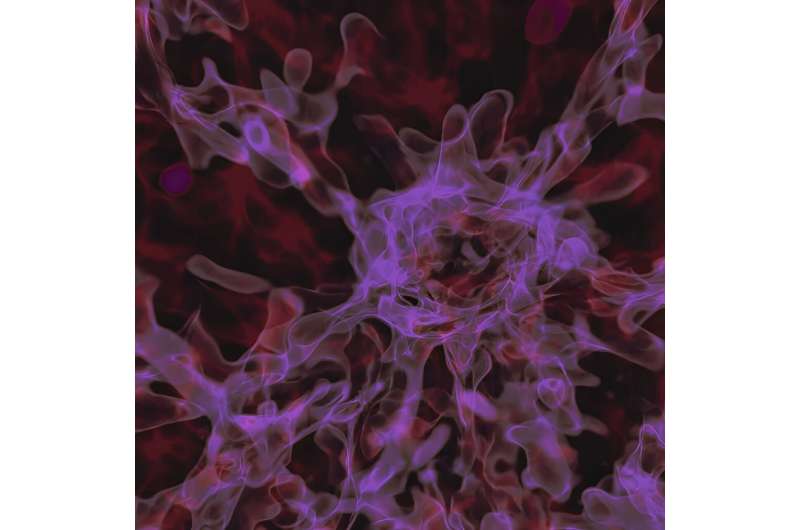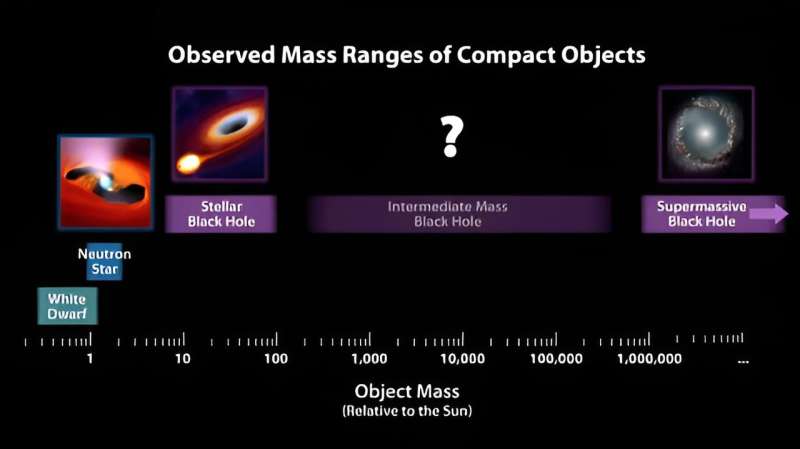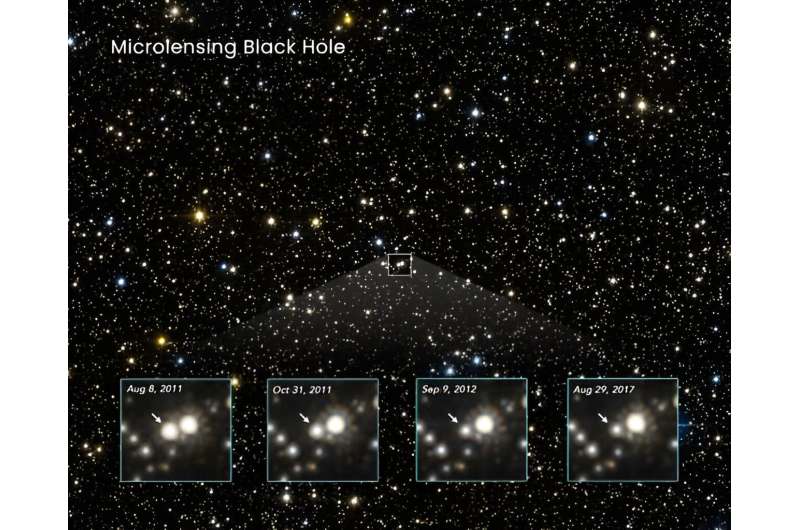This article has been reviewed according to Science X's editorial process and policies. Editors have highlighted the following attributes while ensuring the content's credibility:
fact-checked
preprint
trusted source
proofread
Nancy Grace Roman Space Telescope could finally tell us if primordial black holes exist

When the universe erupted into existence with the Big Bang, all of its matter was compressed into a tiny area. Cosmologists theorize that in some regions, subatomic matter may have been so tightly packed that matter collapsed into primordial black holes. If these primordial black holes exist, they're small, and they could be hiding among the population of free-floating planets.
Black holes are nature's most confounding objects. Einstein's theory of relativity predicted their existence, but he disagreed that black holes could actually form. As other scientists worked with the equations, they eventually showed that black holes could exist.
Now we know they do, and we know they're so dense that they warp space-time and pull everything towards them. Even light can't escape.
Researchers have been trying to uncover the family tree of black holes. They know that some massive stars will collapse in on themselves near the end of their lives and form stellar mass black holes. They know that supermassive black holes (SMBHs) exist in the heart of large galaxies like the Milky Way. There's also increasing evidence for intermediate-mass black holes (IMBHs,) which sit in between the smaller stellar mass black holes and the gargantuan SMBHs.
But what about primordial black holes (PBHs)? If they exist, they formed long before the first star burst into life. They can be any size, according to theory, and could have played a role in galaxy formation. In the struggle to understand how black holes become so massive, PBHs could fill in an important blank spot. There are also tantalizing indications that if they do exist, they could be components of dark matter.

New research shows how NASA's Nancy Grace Roman Space Telescope could find PBHs. They could be hiding among a mysterious population of low-mass objects. The objects could be free-floating planets (FFPs,) also called rogue planets, or they could be PBHs, and the upcoming space telescope could have the power to find them.
The paper, "Rogue worlds meet the dark side: revealing terrestrial-mass primordial black holes with the Nancy Grace Roman Space Telescope," has been published on the pre-print server arXiv. The lead author is William DeRocco from the Physics Department at UC Santa Cruz.
The Nancy Grace Roman Space Telescope will be a powerful infrared telescope when launched in a few years. It has some large astrophysical meals on its observing menu, like measuring dark energy, relativity, and space-time's curvature. It'll also look for low-mass objects as diminutive as Mars that are unanchored to any star. In doing so, it might shed light on primordial black holes.
To look for these low-mass objects and determine if they're FFPs or PBHs, the Roman Space Telescope needs help. It'll make use of gravitational micro-lensing to search the sky for these elusive objects. They can be any size, from as small as a single subatomic particle to as large as a small planet.
"Gravitational microlensing is one of the strongest observational techniques to observe nonluminous astrophysical bodies," the authors write in their paper. "Existing microlensing observations provide tantalizing evidence of a population of low-mass objects whose origin is unknown."
The question is, are these puzzling objects rogue planets? Or are they PBHs?
The problem with trying to observe these objects is that they can't be resolved well enough individually. Instead, they need to be uncovered statistically, and that means we need a large survey of them.
"However, the nature of these objects cannot be resolved on an event-by-event basis, as the induced light curve is degenerate for lensing bodies of identical mass. One must instead statistically compare distributions of lensing events to determine the nature of the lensing population," the authors write.
The Roman Space Telescope will have a lot on its plate after its scheduled launch in 2027. One of its core observing programs is aimed directly at these low-mass astrophysical objects. It's called the Galactic Bulge Time Domain Survey.
This survey relies on the stellar density in the galactic bulge. There's a high density of both stellar lenses and sources toward the bulge, and the Roman Telescope will repeatedly survey these dense regions with its Wide Field Instrument (WFI.)

The research team behind the new paper says that the survey has the potential to transform our understanding of these low-mass objects. "In summary, our results show that even under conservative assumptions about Roman's detection threshold and the underlying background of FFPs, the Galactic Bulge Time Domain Survey will be highly sensitive to detecting a population of PBHs in new regions of parameter space."
"Roman is therefore poised not only to make the first precise measurements of the FFP mass distribution but to possibly uncover a subpopulation of PBHs lying within it as well," they conclude.
The two era-defining questions in modern space science concern dark energy and dark matter. Dark energy is the name given to the force that drives the universe's expansion. Dark matter is the name given to the unseen mass that gives the universe its form and organizes its large-scale structure like galaxies and galaxy clusters. But we still don't know what dark matter is.
Primordial black holes are one of the leading candidates for dark matter. If PBHs make up all or a significant portion of the universe's dark matter, it explains the universe's large-scale structure. They could also explain some gravitational lensing that can't be explained by ordinary matter. Evidence that PBHs are dark matter is far from conclusive, but some scientists argue that they make up all or a portion of the universe's dark matter.
"Roman's Galactic Bulge Time Domain Survey is expected to observe hundreds of low-mass microlensing events, enabling a robust statistical characterization of this population," the authors explain. With this survey data in hand, scientists could be poised to make real headway on the dark matter question and begin to unlock the universe's deepest mysteries.
But we'll have to wait a few years.
More information: William DeRocco et al, Rogue worlds meet the dark side: revealing terrestrial-mass primordial black holes with the Nancy Grace Roman Space Telescope, arXiv (2023). DOI: 10.48550/arxiv.2311.00751
Journal information: arXiv
Provided by Universe Today




















